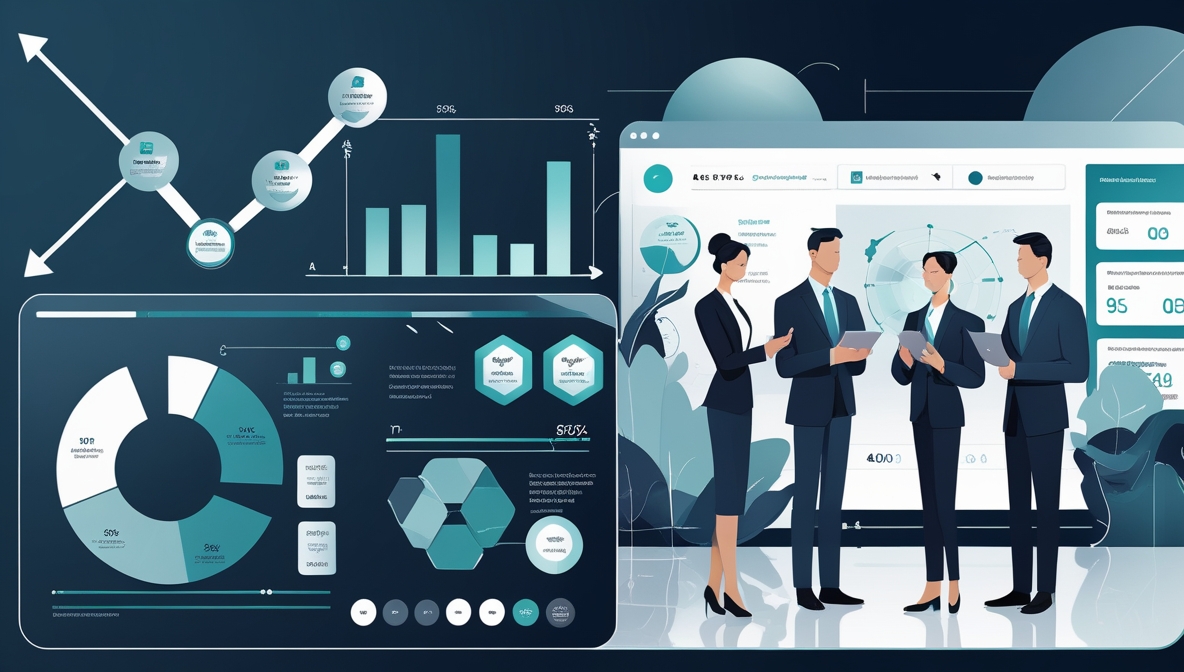Organizations today increasingly rely on information technology to streamline processes, enhance productivity, and maintain competitive advantage. However, determining whether an IT project truly delivers economic value and aligns with organizational goals is often a complex task. The Economic Efficiency Assessment Methodology (WiBe) is specifically designed to provide clarity and precision to this critical evaluation process, guiding leaders through structured, fact-based assessments of their technology investments.
In many organizations, IT investment decisions are made without a rigorous evaluation framework, frequently relying on assumptions, intuition, or incomplete data. This approach often leads to inefficient use of resources, where significant investments in technology fail to deliver the expected benefits, leaving businesses vulnerable to financial loss, competitive disadvantage, and operational disruption. Additionally, without clear, standardized criteria, organizations struggle to prioritize projects effectively, risking suboptimal allocation of their limited financial and human resources.
The impact of poorly evaluated IT investments can be profound. Companies and governmental agencies alike have seen IT budgets balloon, timelines expand uncontrollably, and projects fail outright due to inadequate assessment of economic efficiency. Moreover, neglected qualitative factors—such as urgency, strategic alignment, and customer impact—frequently result in investments that seem profitable on paper but fail in practice, damaging organizational credibility and stakeholder trust.
To address these challenges, the Economic Efficiency Assessment Methodology (WiBe) offers a robust and structured approach for thoroughly evaluating IT investments. WiBe systematically examines both monetary and qualitative dimensions, guiding users through clear steps to identify, measure, and analyze development and operational costs, benefits, project urgency, strategic relevance, and external impacts. Using a comprehensive criteria catalogue, WiBe enables organizations to assign concrete, quantitative scores and to effectively balance financial data with strategic and qualitative insights. This transparent scoring approach facilitates objective comparison and prioritization, allowing leaders to confidently identify investments that will deliver genuine economic and strategic value.
Ultimately, applying the Economic Efficiency Assessment Methodology (WiBe) empowers organizations to achieve greater alignment between their technology initiatives and overarching strategic goals. By relying on structured evaluations rather than intuition, decision-makers gain clarity and confidence, ensuring that every IT investment is precisely targeted to maximize organizational effectiveness, reduce risk, and generate measurable returns. Through WiBe, organizations can significantly enhance their ability to turn technology investments into long-term successes.
Main Contents
- Comprehensive Introduction to Economic Efficiency Assessment Methodology (WiBe): Outlines the foundational concepts and purpose behind conducting structured economic evaluations of IT investments.
- Step-by-Step Framework for Evaluating IT Projects: Provides detailed instructions on systematically identifying and quantifying monetary and qualitative factors, including cost analysis, urgency, strategic importance, and external impacts.
- Criteria Catalogue for Economic Efficiency: Delivers a structured set of standardized criteria that enable consistent and transparent assessment of the economic impact of IT initiatives.
- Calculating and Interpreting Economic Efficiency Metrics: Offers clear guidance on how to utilize the net present value method, stability indicators, and qualitative scoring to reach an objective, informed investment decision.
- Practical Implementation and Best Practices: Shares insights from real-world experiences, highlighting how to effectively integrate the methodology into organizational planning processes and decision-making frameworks.
Key Takeaways
- Structured Decision-Making: WiBe provides organizations with a systematic approach to evaluate and justify IT investments based on clear, quantifiable metrics.
- Balanced Evaluation Approach: The methodology integrates both monetary and qualitative factors, ensuring strategic and operational considerations are equally assessed.
- Risk Reduction and Transparency: Applying WiBe enhances transparency, reduces investment risks, and ensures that resource allocation aligns closely with organizational goals and priorities.
- Scalable and Versatile Framework: The flexibility and comprehensive nature of WiBe allow it to be adapted and applied effectively across industries and organization types.
- Strategic Alignment of IT and Business Goals: By clearly quantifying value and strategic relevance, WiBe ensures that IT initiatives contribute directly to achieving broader organizational objectives.
Chief Information Officers (CIOs) and IT Leaders frequently face the challenge of making informed, economically sound investment decisions in technology. These decisions directly impact organizational performance, cost-efficiency, and strategic outcomes. The Economic Efficiency Assessment Methodology (WiBe) equips IT leaders with a structured, reliable tool for systematically evaluating IT investments, ensuring that decisions are data-driven, strategically aligned, and economically justified.
- Prioritizing IT Investments Effectively: WiBe helps leaders objectively compare and rank technology projects based on economic returns, urgency, and strategic alignment, enabling smarter resource allocation.
- Reducing Project Risks and Failures: By incorporating comprehensive risk assessments and detailed cost-benefit analyses, WiBe ensures that potential pitfalls and financial uncertainties are identified and mitigated upfront.
- Improving Transparency and Communication: The clear and standardized criteria provided by WiBe enhance transparency in decision-making processes, facilitating better internal communication and stakeholder buy-in.
- Strategically Aligning IT with Organizational Goals: The methodology ensures every evaluated project is directly tied to overarching business or organizational objectives, promoting technology initiatives that deliver tangible value.
- Demonstrating Financial and Operational Accountability: Using WiBe's quantitative metrics and qualitative scoring, IT leaders can clearly demonstrate and justify the economic rationale and strategic value of their IT investments to stakeholders and senior management.
By applying the Economic Efficiency Assessment Methodology (WiBe), CIOs and IT Leaders gain a powerful means of addressing real-world challenges related to technology investment decisions. The structured, rigorous approach provides clarity and confidence, ultimately resulting in smarter, more strategic use of organizational resources and increased success of IT initiatives.

